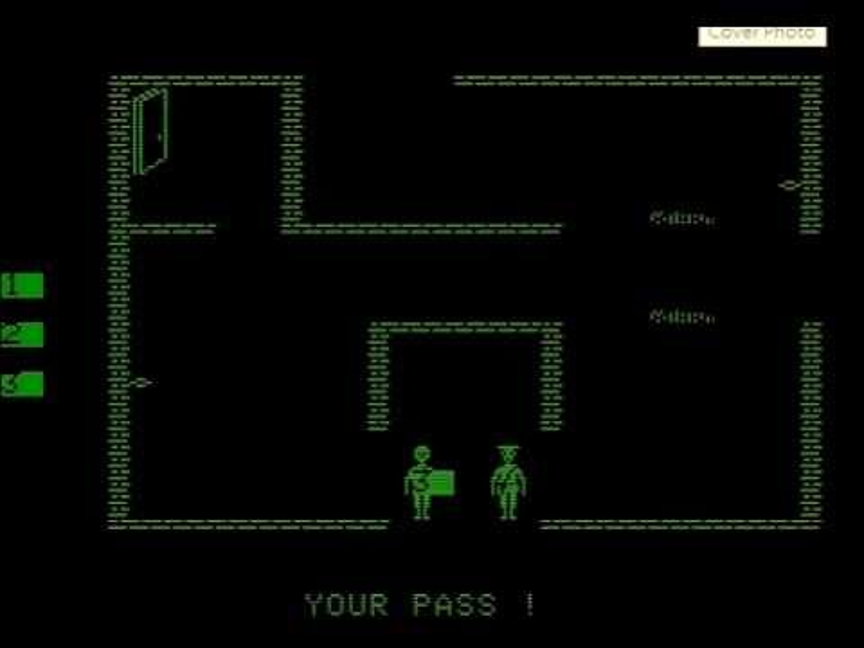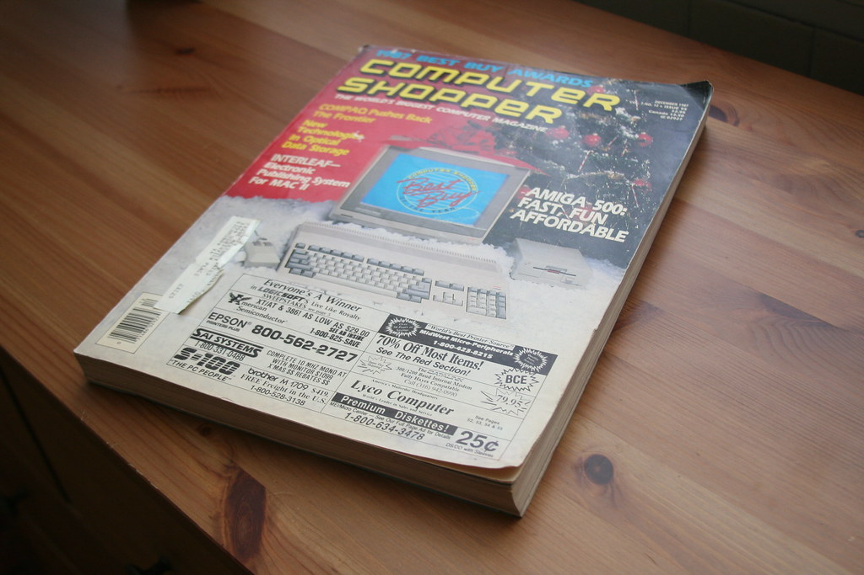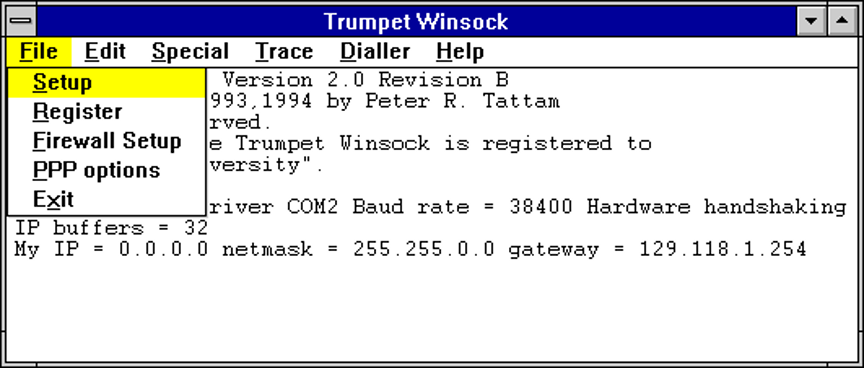If you haven’t figured it out by now, I’m kind of an old gray-bearded guy. Well, getting there, anyway. Sure, I like to think I’m still 27 years old, but I’m not. I’ve been around.
I’m one of those guys who was lucky enough to get an Apple ][e for Christmas. I bought an IBM PS/2 Model 25 (with the upgrade to 640K of RAM!) when I started my first real job. I found the Internet in 1993 while at graduate school, and I remember the uproar when AOL announced that they’d be connecting all their subscribers. (The old guard was not happy about all the greenhorn n00bs flooding into the scene.) I foolishly didn’t buy (and then sell later) Netscape when it IPO’d in 1995. And I remember pets.com and Web 1.0. I’ve seen a lot.
What was it like? For those of you who aren’t 20 years older than Linux, here are four things (plus a bonus list) that I remember from those early days that really got my heart racing. They still fill me with nostalgia when I reflect back.
Playing Castle Wolfenstein on the Apple ][e
People think of Castle Wolfenstein as the original first person shooter, but most folks don’t know that it was originally a two-dimensional adventure maze game on the Apple ][. You’d work your way through various levels, avoiding the guards and then shooting them to work through the maze.

IDG
I still can feel the rush of adrenaline when the tinny speaker would proclaim “SS!!,” as a terrifyingly aggressive and deadly SS soldier would appear at random and try to kill you.
Video games were a lot different back then, but they were just as fun as today’s games with amazing graphics and gameplay.
Flipping through every page of Computer Shopper
One of the reasons I’m a PC guy and not a Mac guy is that, early on, the PC was a much more open system (and thus cheaper). You had more than just one precious vendor to purchase a PC from. In fact, there were thousands. And long before the notion of Internet commerce, we shopped for PCs, peripherals, replacement parts, memory, bigger hard drives (upgrading from a 40MB hard drive to a 106MB hard drive was a huge deal, believe me), and all manner of other stuff for the modern computer nerd via a monthly magazine called Computer Shopper. It was a very big magazine, almost like a phone book for a mid-sized city. (I realize that reference may be lost on many of you.) The arrival of Computer Shopper in the mail every month was a big event.
I used to pore over every page of this thick tome, looking for the best deal for upgrading the RAM in my 386DX-25 from 2MB to 4MB. I was constantly plotting the upgrade of my PC—moving up to a 486DX processor, a bigger hard drive than the original 40MB (not a typo), and a better graphics card so I could move from 800×600 to the ”massive” resolution of 1024×768.
And oh yeah, there were a few technical articles thrown in to make the whole thing seem a bit more legit.

IDG
The glory that was TapCIS for Compuserve
Today, being “online” is ubiquitous, and the cost is rapidly approaching zero. There is plenty of free Wi-Fi around and, if Elon Musk’s Starlink has anything to say about it, it won’t be long before it is worldwide. But in the early 1990s, “being online” meant using a 2400 BAUD modem to dial up to a Compuserve node and pay by the minute for a text-based interface to discussion forums and download servers.
Paying by the minute (and sometimes also paying a per-minute long-distance charge because you lived in a small town without a local access number) meant that you couldn’t leisurely browse the forums, reading on the way. It was a marvelous moment when I discovered TapCIS, an app that allowed you to automate your connection to Compuserve. It would dial up Compuserve, connect, download all of the new content from your favorite forums, upload posts you had previously written while offline, and do so in a matter of minutes, saving you a lot in online costs. It made Compuserve usable, fun, and worthwhile.
The thrill of using Trumpet WinSock at home
Compuserve soon got eclipsed. In 1993, I was a student at the Naval Postgraduate School, and, as both a military and academic institution, it was part of what was then the arcane and mysterious “Internet.” I had an email address on the nps.navy.mil domain, and started having online conversations on the Usenet newsgroups. Soon I discovered something called the “Netscape Navigator,” which gave me access to this strange new thing called the “World Wide Web.” Little did we know.
And the World Wide Web was a revelation. The Internet was a totally open system based on publicly available standards. No more paying by the minute. I could set up my own website using the early incarnation of HTML. I could find other websites using the index at yahoo.com, which, in its earliest incarnation, was a directory of websites manually maintained by two Stanford students who later became billionaires. You could send them your URL, a short description of your site, and they would add it to their index under “Personal Web Sites.” Quaint, I know.

IDG
But access to the Internet was limited to logging on to the Sun Sparc Workstations in the computer lab at school. So imagine the thrill of discovering Trumpet Winsock — a Windows application that let you connect your modem to the school’s IP-based network and thus the broader Internet. Match that up with Netscape Navigator for Windows and you could surf the web from the comfort of your own home! It was exhilarating.
Other technology blasts from the pre-modern past
Other things I remember:
- Paying a quarter to play Pong at the local pinball arcade.
- The Cray computer at the Naval Postgraduate School that had a staggering 256MB of memory.
- The first time I saw a web address in a TV commercial (www.toyota.com).
- Thinking about buying the microsoft.com domain before Microsoft did and then selling it to them. And then deciding the $70 was too much.
- Going to a store and buying software in a box off the shelf.
- Buying Stacker to double the size of my hard drive through compression and spending a long evening tweaking my config.sys file to make it work.
- Waiting every week to read the Robert X. Cringely rumor column in the back of the physical copy of this very publication, InfoWorld.
- People typing “Micro$oft” and blaming Bill Gates for anything and everything wrong in the industry.
- Saving up and upgrading (via a good deal in Computer Shopper!) to a 17-inch monitor from my standard 14-inch model.
- The rush of getting my very own static IP address and running my very own Apache web server on my home computer.
- The furor it caused when companies, realizing the unwieldiness of 30 floppy discs to hold the install of a software product, started distributing their software on CD-ROMs, a drive type not everyone had.
- The furor it caused when companies stopped making their software available on CD-ROMs and provided it on DVDs instead, a drive type not everyone had.
- The furor it caused when companies stopped making their software available on DVDs and provided it through direct download instead.
I expect you fellow graybeards remember all of this stuff too. I’m guessing others of you reading this have no memory at all of any of it. But the ’90s were a glorious time, with every new issue of your favorite computer magazine telling of tantalizing new software and hardware upgrades. Things moved pretty fast.
Kind of like today. Technology is still glamorous and exciting, and it’s moving faster than ever. Of course, instead of magazines, we have Hacker News and Google and AI and newsletters and podcasts.
And I’m quite sure that 30 years from now, one of you will be writing a very similar article about everything that was new, thrilling, and kind of funny to think about from back in your day.
